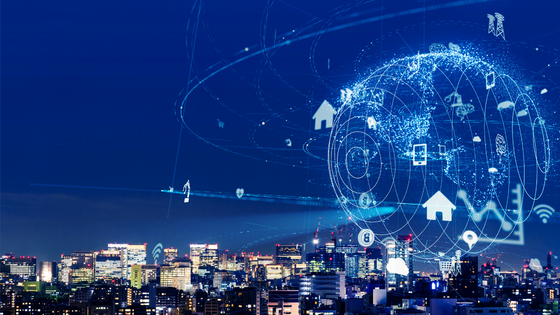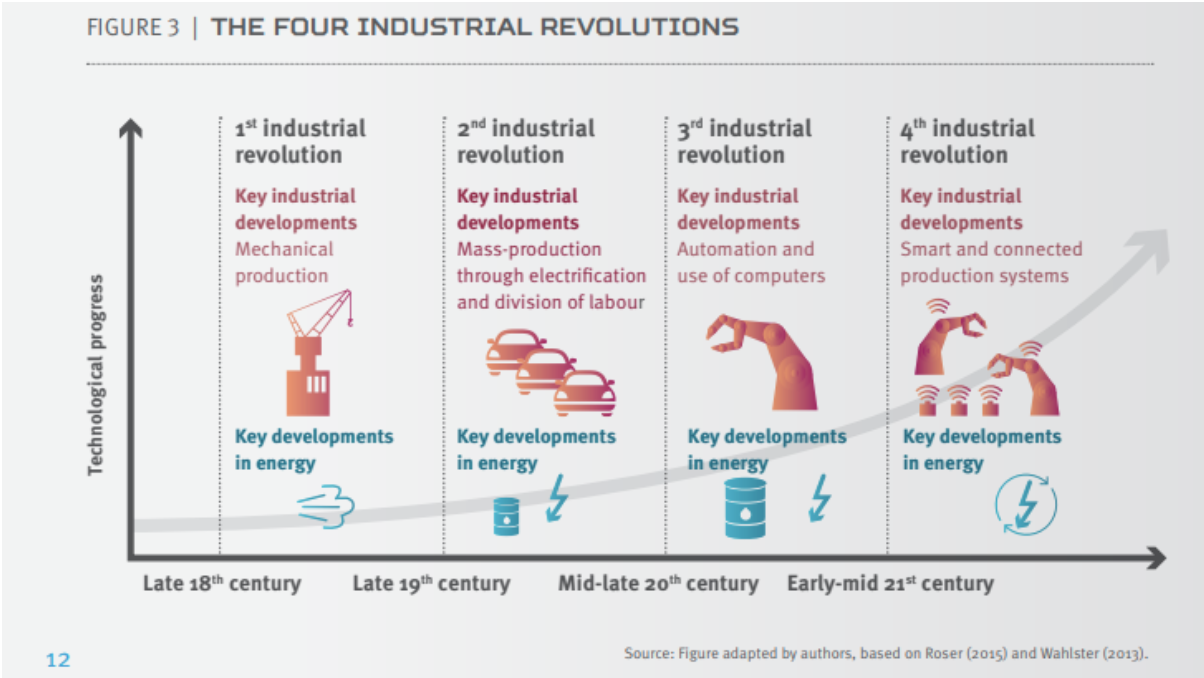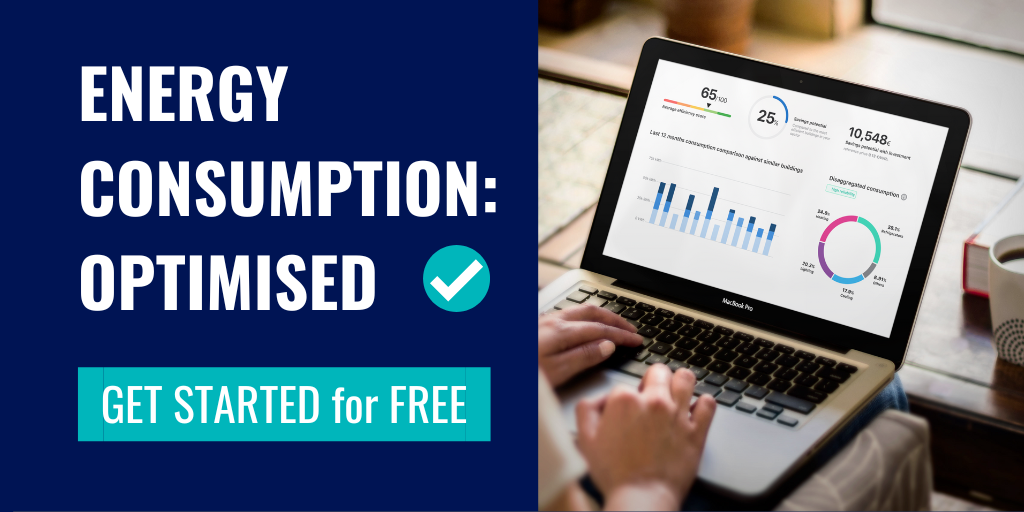The evolution of technologies and the introduction of IoT in the industry has not only led to the new Industrial Revolution 4.0 but also to the emergence of Energy 4.0. In this article, you will find out how they relate to each other, and what benefits and challenges the digital revolution has brought to the energy world. If you are interested, keep on reading!
We know that energy consumption is a significant contributor to global emissions and climate change. Plus, the associated costs are rising in many parts of the world. The consequence is that there is increasing pressure to address both the volume and type of energy consumption in all areas and to utilise new and innovative solutions in doing so.
The benefits of new electricity sources such as wind and solar have now proved themselves mature and reliable technologies, but challenges still exist. Thus, optimising these new forms of generation to match patterns of consumption among users is the next step.
Since industrial users account for over 40% of global energy consumption, there is a great opportunity to improve energy efficiency by capitalising on the benefits of major trends in this sector. In conclusion, there is a large untapped savings potential in the industrial sector that can be exploited by applying a range of energy efficiency improvements.
Industry 4.0 and how it relates to Electricity
Industry 4.0, also known as the Internet of Things (IoT), is the term given to an emerging stage in the world’s industrial progression.
The 1st major industrial revolution occurred towards the late 18th century when manual labour began to be replaced by mechanical production. About 100 years later, the 2nd major revolution occurred with the mass electrification of industrial processes. The world then rolled out widespread electricity grids. Lastly, in the mid-20th century, automation and computers were introduced in the 3rd revolution to further optimise production processes.
Now, the 4th revolution, or Industry 4.0, is exploiting new smart and connected systems to improve both the flexibility and efficiency of the industry. Essentially, this enhanced intelligence derives from the interconnectedness of devices, machinery and larger systems, both within and between industry sites and users.
Concurrent and similar changes in the electricity sector are also underway, which have both a causal and effectual relationship with the industrial sector. Further, wider digitalisation trends are being driven by innovation in many areas. This is requiring new government regulations and new business models, as well as creating whole new industries.
For example, the rise of Smart Grids provides electricity utilities, generators and users with the tools to connect and utilise new technologies. This has led to a demand for new energy generation technologies and batteries, encouraging stronger supply chains too.
The use of big data and artificial intelligence in energy management allows for the optimisation of these complex systems and reduces redundant electricity usage. We have seen an explosion of new software and control companies offering these solutions over the past few decades.
8 Benefits of the Electricity Digital Revolution
The digital revolution occurring in the electricity industry has resulted in many new technologies and an exponential increase in data storage and processing. Along with this have come many benefits:
- This has allowed electricity utilities to address grid instability and imbalance issues caused in part by the rollout of intermittent renewable energy generation. Real-time data monitoring has enabled much faster corrective actions and pre-emptive processes to become mainstream.
- Key to this digital transformation has been the related interoperability of multiple types of assets, such as renewable generation, energy storage and flexible loads. This is Energy 4.0 at work.
- The use of data and monitoring at industrial sites has also enabled the identification of process inefficiencies and faulty equipment. Replacing older models with newer and more efficient technology, as well as changing business practices, are just part of the solution. More advanced software tools using artificial intelligence can also proactively optimise energy flows.
- By harnessing new technologies and reducing waste, we can reduce the energy consumption of just 5 industries by 13-29%. As a result, this reduces total global CO2 emissions by an impressive 4%.
- Increased energy efficiency: The digital revolution has allowed for the implementation of smart grids, which can detect energy usage in real-time and make adjustments accordingly. This has resulted in significant energy savings for both consumers and utilities.
- Increased customer engagement: Digital technologies have enabled utilities to communicate more effectively with customers about their energy usage, bills, and energy-saving opportunities. This has resulted in greater customer satisfaction and loyalty.
- Improved safety: Digital technologies have improved the safety of workers and consumers by enabling remote monitoring of equipment and detection of potential hazards before they become major issues.
- More reliable energy supply: The digital revolution has enabled utilities to better predict and prevent power outages through predictive maintenance, real-time monitoring, and the use of advanced analytics.
Overall, the electricity digital revolution has the potential to transform the industry by improving efficiency, reliability, and sustainability while also creating new business models and job opportunities. Therefore, it’s in all our best interests to investigate the benefits of Industry 4.0 in the electricity sector. So, let’s get to actively implementing this and share best practices for doing so.
3 Challenges of the Electricity Digital Revolution
While we’ve seen that there are many benefits to the concept of Energy 4.0, this means that there are also several challenges. In order to realise the full suite of benefits, the sector needs to address these.
1. As is the case with any new technological revolution, the underlying technology exists, but it will take sufficient investment and desire for change. This will involve industry, government and the general public to achieve a holistic, inclusive and sustainable solution.
2. One very important challenge is security. It goes without saying that this is vital from the start and throughout the ongoing digital transformation of the electricity sector. The implications of weak security infrastructure can have dire consequences. For example, this could result in accidental mismanagement, but also more sinister intervention. This can have far-reaching consequences well outside the electricity industry – it can be a geo-political issue for many governments worldwide.
3. Another challenge to governments is the need for reactive and proactive legislation and regulatory rules. These need to quickly reflect the innovative solutions prevalent in the electricity and industrial sectors. For example, physical and cyber safety standards need to address changing consumer needs.
They also need to be broad enough to cover significant changes to the types of technologies used and the new interconnected networks that are created. As has been the case in many sectors undergoing similar digital transformations (for example, the telecommunications and automotive sectors), the right regulation is key to ensuring fair and safe competition.
Examples of Energy 4.0 in action
Now that we understand what the concept of Energy 4.0 is, and what the benefits and challenges are, let’s take a look at what is actually being implemented and used right now.
In general, it appears that most of the work is being done in traditionally developed countries. This is because these are the countries with more complex Industry 3.0 sites already established, generally, more capital to invest in new technology, and strong innovation ecosystems supporting the transition.
However, developing countries should still be able to access the benefits of these changes. In fact, some may even “leapfrog” Industry 3.0 to go directly to an interconnected and intelligent Industry 4.0 reality. This is similar to the leapfrogging of traditional electricity infrastructure in many parts of the world, in favour of localised generation, storage and microgrids.
In Europe, there are many projects at regional, national and EU levels. These focus on enabling the transition to a more sustainable energy future by supporting Industry 4.0. For example, in the UK, the High Value Manufacturing Catapult has supported over 4,500 projects across the entire Industry 4.0 supply chain. In France, the Nouvelle France Industrielle program was initiated by the government to support the industry through the digitalisation process. In Spain, Industria Conectada 4.0 runs several programs to support public-private partnerships. The diversity of support for Industry 4.0 is evidence of its wide recognition as a game-changer to industry and the electricity sector.
Conclusion
The concept of Energy 4.0 follows a similar progression to the Industrial sector. The increasingly connected and intelligent ecosystem of assets has further benefited from the optimisation using big data and artificial intelligence.
This has presented the potential for significant reductions in electricity use, and therefore greenhouse gas emissions. Enabling this is the ability to utilise new renewable generation en masse, and significantly improve the energy efficiency of existing assets and processes.
While this comes with security and regulatory challenges, the world has already seen great examples of Energy 4.0 in action to realise the benefits of this major digitalisation trend.

Mio Dart was formerly part of the sales team bringing her energy industry expertise to our sales team. She collaborated with us on the research and copywriting of great-quality content.






